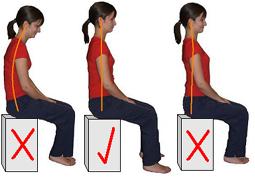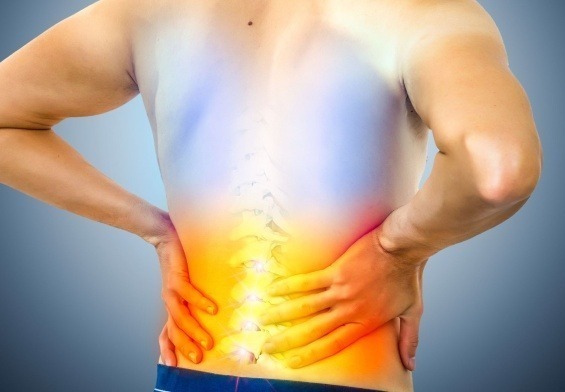Originally posted on: https://gplmedicine.org/the-comprehensive-guide-to-understanding-back-pain-causes-prevention-and-the-role-of-posture.html
Back pain is a pervasive issue, affecting millions of people worldwide. It’s a leading cause of disability, preventing many from engaging in work as well as everyday activities. Understanding the causes of back pain, how to prevent it, and the significant role posture plays in maintaining spinal health is crucial for anyone looking to improve their quality of life.
Understanding Back Pain
Back pain is a complex and widespread issue that affects individuals of all ages and backgrounds. It manifests in various forms, ranging from a temporary, mild discomfort to a persistent, excruciating condition that can severely impact one’s daily life and well-being. The nature of back pain is often categorized into two main types: acute and chronic. Acute back pain is sudden and short-lived, typically lasting from a few days to a few weeks, and is usually caused by a specific event or injury, such as a sprain or muscle strain. Chronic back pain, on the other hand, persists for three months or longer and may result from deeper, underlying issues such as degenerative disc disease, long-term poor posture, or ongoing stress to the spinal structures. Understanding the distinction between these types is crucial for effective treatment and management.
The anatomy of the back plays a significant role in the complexity of diagnosing and treating back pain. The spine, a pivotal structure in the human body, is composed of vertebrae, discs, nerves, muscles, and ligaments, all working together to provide support, strength, and flexibility. However, this intricate interplay also makes the back susceptible to injury and pain. Factors contributing to back pain can include mechanical issues, such as the misalignment of the spine or a herniated disc pressing on a nerve; degenerative conditions, like arthritis affecting the spinal joints; or muscular problems, including spasms and tension. Additionally, lifestyle factors such as sedentary behavior, poor ergonomics, and incorrect lifting techniques can exacerbate or even cause back pain. Given this complexity, a comprehensive understanding of the causes and mechanisms of back pain is essential for identifying the most effective prevention and treatment strategies.
Causes of Back Pain
The causes of back pain are diverse and multifactorial, often involving a combination of physical, lifestyle, and environmental factors. At the core, medical conditions play a significant role, with issues such as herniated discs, where the inner gel-like core of the disc bulges out through a tear in its outer layer, causing pain and irritation to the surrounding nerves. Sciatica, another common condition, results from irritation or compression of the sciatic nerve, leading to sharp, shooting pain through the buttocks and down the leg. Other conditions like arthritis can cause inflammation in the spinal joints, while osteoporosis leads to weakened bones, increasing the risk of fractures that may contribute to back pain. These conditions highlight the complexity of the spine’s health and underscore the importance of addressing underlying medical issues in the management of back pain.
Lifestyle factors also play a crucial role in the development and exacerbation of back pain. A sedentary lifestyle, common in today’s society, can lead to weakened back muscles and decreased spinal flexibility, significantly increasing the risk of developing pain. Excess body weight adds unnecessary stress on the spine, particularly on the lower back, exacerbating pain and discomfort. Improper lifting techniques, such as bending from the waist instead of using the legs and keeping the load close to the body, can lead to acute injuries or contribute to the chronic degradation of spinal health. Additionally, accidents and injuries, whether from sports, falls, or sudden impacts, can cause immediate back pain or contribute to long-term issues. Understanding these causes is crucial for developing effective prevention and treatment strategies, highlighting the need for a holistic approach to back health that includes medical intervention, lifestyle adjustments, and awareness of one’s daily activities and their impact on spinal health.
The Link Between Posture and Back Pain
The relationship between posture and back pain is both significant and complex, underpinned by the biomechanical and physiological demands placed on the body by our daily activities. Poor posture, a common issue in today’s increasingly sedentary lifestyle, contributes substantially to the development and exacerbation of back pain. When the spine is not properly aligned, undue stress is placed on its structures, including the vertebrae, discs, and surrounding muscles and ligaments. For instance, slouching or leaning forward for prolonged periods, especially common in office environments, can lead to muscle fatigue and strain. This imbalance in muscle activity can cause the spinal structures to wear down over time, leading to conditions such as disc degeneration or herniation, which in turn can irritate spinal nerves and cause pain. The cumulative effect of poor posture not only affects the spine’s health but can also lead to chronic pain conditions that impact overall quality of life.
Improving posture, therefore, plays a pivotal role in both preventing and alleviating back pain. Good posture involves maintaining the spine’s natural curves, with the head aligned over the shoulders and the top of the shoulders over the hips. This alignment reduces the strain on the spine’s ligaments and muscles, distributing body weight evenly and minimizing the risk of any single structure being overloaded. Moreover, adopting correct posture is not limited to sitting; it extends to standing, walking, and even sleeping positions. Ergonomic adjustments to workstations, such as chair height, monitor level, and keyboard placement, can significantly aid in maintaining proper posture. Additionally, regular breaks to stretch and adjust posture throughout the day are crucial for those spending long hours in fixed positions. By understanding and improving posture, individuals can significantly reduce the risk of developing back pain, highlighting the critical link between how we hold our bodies and our spinal health.
Improving Posture to Reduce the Risk of Back Pain
Improving posture is a critical step in reducing the risk of back pain, as it directly influences the alignment and functioning of the spine. Good posture ensures that the spine is in a neutral position, which minimizes stress on the spinal joints, muscles, and ligaments. This alignment is essential not only when sitting or standing but also during movement and while sleeping. To improve posture, individuals can start by becoming more aware of their posture throughout the day and making adjustments as needed. For example, when sitting, it’s important to choose a chair that supports the lower back, keep feet flat on the floor, and avoid crossing legs, which can lead to imbalances. Similarly, when standing, distributing weight evenly on both feet and keeping the shoulders back and down can help maintain proper spinal alignment. Regular posture checks and corrections can gradually lead to lasting improvements in posture and a reduction in back pain.
In addition to daily posture awareness, incorporating specific exercises and stretches into one’s routine can strengthen the muscles that support good posture, further reducing the risk of back pain. Exercises that focus on the core, such as planks, bridges, and abdominal crunches, help stabilize the spine and prevent injuries. Stretching exercises, particularly those that target the back, shoulders, and legs, can improve flexibility and reduce muscle tension, which in turn supports proper posture. Yoga and Pilates are excellent for enhancing both strength and flexibility while also focusing on spinal alignment. For those who spend long hours at a desk, using ergonomic accessories, such as standing desks, ergonomic chairs, and keyboard trays, can also make a significant difference in maintaining good posture. By actively working to improve posture through awareness, exercise, and ergonomic adjustments, individuals can significantly reduce their risk of developing back pain, leading to a healthier and more comfortable life.
Empowering Your Spine: The Path to a Pain-Free Life
In conclusion, understanding the multifaceted nature of back pain, from its causes and the critical role of posture to effective prevention strategies, empowers us to take proactive steps towards maintaining spinal health. By integrating regular exercise, making ergonomic adjustments, and cultivating posture awareness into our daily lives, we can significantly reduce the risk of back pain. This journey towards a pain-free life is not only about correcting or preventing a physical condition but also about enhancing overall well-being and quality of life. As we become more attuned to our bodies and the importance of spinal health, we unlock the potential for greater comfort, mobility, and happiness. Let this comprehensive guide be your first step towards a stronger, healthier back and a more vibrant, active lifestyle.
Resources:
1. Back pain – Symptoms and causes – Mayo Clinic
2. How Can Poor Posture Result In Back Pain? – American Pain Institute




